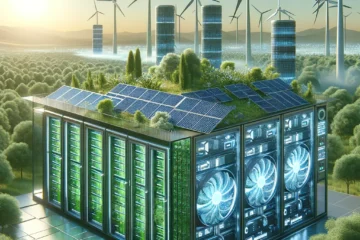In an era where the extinction of species and the destruction of natural habitats are accelerating at alarming rates, the role of technology in conservation efforts has never been more critical. Tech-driven conservation represents a beacon of hope, leveraging cutting-edge innovations to protect endangered species and their habitats. This article delves into how renewable energy, sustainability, technological advancements, and artificial intelligence are being harnessed to combat the loss of biodiversity and promote the health of our planet.
Renewable Energy: Powering Conservation with Clean Energy
The integration of renewable energy sources into conservation projects is a game-changer for environmental protection. Solar, wind, and hydroelectric power provide sustainable alternatives to fossil fuels, reducing carbon footprints and mitigating climate change impacts on vulnerable ecosystems.
Sustainable Energy Solutions in Protected Areas
Renewable energy technologies offer eco-friendly ways to power conservation efforts without harming the very ecosystems they aim to protect. Solar panels installed in remote wildlife reserves can provide electricity for research stations and anti-poaching outposts, ensuring operations that are both effective and environmentally responsible.
Reducing Human-Wildlife Conflict through Renewable Energy
In areas where human-wildlife conflict is prevalent, renewable energy can offer solutions that protect both communities and animals. For instance, solar-powered fencing can deter elephants from encroaching on agricultural lands, preventing crop damage and reducing conflicts with local farmers.
Renewable Energy’s Role in Habitat Restoration
Habitat restoration projects often require significant energy inputs, from powering machinery for reforestation efforts to providing clean water through desalination plants. By utilizing renewable energy sources, these projects can minimize their environmental impact while contributing to ecosystem recovery.
Sustainability: Ensuring Long-Term Conservation Success
Sustainability principles are at the core of tech-driven conservation, emphasizing the need for practices that maintain ecological balance and biodiversity for future generations.
Eco-Friendly Technologies for Sustainable Conservation
Technological innovations, such as biodegradable materials for tracking devices on wildlife or the use of drones for monitoring deforestation, embody the merger of sustainability with conservation technology. These advancements reduce the ecological footprint of human intervention in nature.
Community Involvement in Sustainable Conservation Efforts
The success of conservation projects often hinges on the support and involvement of local communities. Sustainable practices, including community-based ecotourism and participatory monitoring programs, empower residents while fostering a sense of stewardship over local ecosystems.
Sustainability Metrics in Conservation Projects
Measuring the success of conservation efforts through sustainability metrics can guide future strategies and interventions. Data analytics tools assess the impact of projects on biodiversity, ecosystem services, and community well-being, ensuring that conservation efforts are both effective and sustainable.
Technological Advancements: Innovating for the Earth
The rapid pace of technological advancements offers new tools and methods for conservationists to monitor, protect, and restore endangered species and their habitats.
Remote Sensing and Satellite Imagery in Habitat Monitoring
Advanced remote sensing technologies and satellite imagery provide unprecedented views of the Earth’s surface, enabling conservationists to monitor changes in habitats, track illegal activities like poaching and logging, and identify areas in need of protection.
Genetic Technologies in Species Conservation
Genetic engineering and CRISPR technology hold the potential to protect endangered species from diseases, increase genetic diversity, and even bring species back from the brink of extinction. These cutting-edge techniques offer a new frontier in conservation biology.
Artificial Intelligence in Wildlife Tracking and Identification
Artificial intelligence (AI) algorithms can analyze vast amounts of data from camera traps, acoustic sensors, and satellite images to identify species, monitor their movements, and predict threats. AI-driven analytics enhance the precision and efficiency of conservation efforts.
Artificial Intelligence: A New Era in Conservation
AI is transforming conservation strategies by providing tools that can analyze complex environmental data, predict outcomes, and optimize conservation efforts.
Machine Learning for Predictive Conservation
Machine learning models can predict which species and habitats are most at risk, allowing for proactive conservation measures. By analyzing patterns in environmental data, AI can forecast the impacts of climate change, human development, and other threats to biodiversity.
AI in Combatting Illegal Wildlife Trade
AI technologies are being deployed to fight the illegal wildlife trade by monitoring online marketplaces, social media platforms, and dark web sites for illegal activity. Machine learning algorithms can detect suspicious transactions and aid law enforcement in tracking down poachers and traffickers.
Enhancing Ecosystem Management with AI
AI applications in ecosystem management include optimizing reforestation efforts, monitoring water quality in real-time, and managing wildlife populations. These tools enable more effective and adaptive management strategies that can respond to changing environmental conditions.
In conclusion, tech-driven conservation offers innovative solutions to the urgent challenges facing endangered species and their habitats. By leveraging renewable energy, embracing sustainability, advancing technological innovations, and applying artificial intelligence, we can protect the planet’s biodiversity for generations to come. The integration of these technologies not only enhances conservation efforts but also fosters a deeper connection between humanity and the natural world, reminding us of our responsibility to safeguard our shared home.




